No questions found
(a) State what is meant by a field of force. [1]
(b) Gravitational fields and electric fields are two examples of fields of force. State one similarity and one difference between these two fields of force.
similarity, difference. [2]
(c) Two protons are isolated in space. Their centres are separated by a distance $R$. Each proton may be considered to be a point mass with point charge. Determine the magnitude of the ratio. [2]
$$\frac{\text{force between protons due to electric field}}{\text{force between protons due to gravitational field}}.$$
(a) State what is meant by a mole. [2]
(b) Two containers A and B are joined by a tube of negligible volume, as illustrated in Fig. 2.1.
The containers are filled with an ideal gas at a pressure of $2.3 \times 10^5 \text{Pa}$.
The gas in container A has volume $3.1 \times 10^3 \text{cm}^3$ and is at a temperature of $17^\circ \text{C}$.
The gas in container B has volume $4.6 \times 10^3 \text{cm}^3$ and is at a temperature of $30^\circ \text{C}$.
Calculate the total amount of gas, in mol, in the containers. [4]
A capacitor consists of two metal plates separated by an insulator, as shown in Fig. 3.1.
The potential difference between the plates is $V$. The variation with $V$ of the magnitude of the charge $Q$ on one plate is shown in Fig. 3.2.
(a) Explain why the capacitor stores energy but not charge.
..........................................................
..........................................................
..........................................................
.......................................................... [3]
(b) Use Fig. 3.2 to determine
(i) the capacitance of the capacitor,
capacitance = ..................... µF [2]
(ii) the loss in energy stored in the capacitor when the potential difference $V$ is reduced from 10.0 V to 7.5 V.
energy = ..................... mJ [2]
(c) Three capacitors $X$, $Y$ and $Z$, each of capacitance 10 µF, are connected as shown in Fig. 3.3.
Initially, the capacitors are uncharged.
A potential difference of 12 V is applied between points $A$ and $B$.
Determine the magnitude of the charge on one plate of capacitor $X$.
charge = ................................ µC [3]
(a) The first law of thermodynamics may be expressed in the form $\Delta U = q + w$.
Explain the symbols in this expression. [3]
- + $\Delta U$
- + $q$
- + $w$
(b) (i) State what is meant by specific latent heat. [3]
(ii) Use the first law of thermodynamics to explain why the specific latent heat of vaporisation is greater than the specific latent heat of fusion for a particular substance. [3]
A bar magnet is suspended vertically from the free end of a helical spring, as shown in Fig. 5.1.
One pole of the magnet is situated in a coil. The coil is connected in series with a high-resistance voltmeter. The magnet is displaced vertically and then released. The variation with time $t$ of the reading $V$ of the voltmeter is shown in Fig. 5.2.
(a) (i) State Faraday’s law of electromagnetic induction. [2]
(ii) Use Faraday’s law to explain why
- there is a reading on the voltmeter, [1]
- this reading varies in magnitude, [1]
- the reading has both positive and negative values. [1]
(b) Use Fig. 5.2 to determine the frequency $f_0$ of the oscillations of the magnet. [2]
(c) The magnet is now brought to rest and the voltmeter is replaced by a variable frequency alternating current supply that produces a constant r.m.s. current in the coil. The frequency of the supply is gradually increased from $0.7f_0$ to $1.3f_0$, where $f_0$ is the frequency calculated in (b).
On the axes of Fig. 5.3, sketch a graph to show the variation with frequency $f$ of the amplitude $A$ of the new oscillations of the bar magnet. [2]
(d) (i) Name the phenomenon illustrated on your completed graph of Fig. 5.3. [1]
(ii) State one situation where the phenomenon named in (i) is useful. [1]
An alternating current supply is connected in series with a resistor R, as shown in Fig. 6.1.
The variation with time $t$ (measured in seconds) of the current $I$ (measured in amps) in the resistor is given by the expression
$I = 9.9 \sin(380t)$.
(a) For the current in the resistor R, determine
(i) the frequency, [2]
(ii) the r.m.s. current. [2]
(b) To prevent over-heating, the mean power dissipated in resistor R must not exceed 400W.
Calculate the minimum resistance of R. [2]
(a) State what is meant by the \textit{de Broglie wavelength}.
(b) An electron is accelerated in a vacuum from rest through a potential difference of 850V.
(i) Show that the final momentum of the electron is $1.6 \times 10^{-23}$ Ns.
(ii) Calculate the de Broglie wavelength of this electron.
wavelength = \text{........................................} m [2]
(c) Describe an experiment to demonstrate the wave nature of electrons.
You may draw a diagram if you wish.
(a) State what is meant by the \textit{binding energy} of a nucleus.
\text{..............................................................} \text{..............................................................} \text{..............................................................} [2]
(b) Show that the energy equivalence of 1.0 u is 930 MeV. [3]
(c) Data for the masses of some particles and nuclei are given in Fig. 8.1.
Use data from Fig. 8.1 and information from (b) to determine, in MeV,
(i) the binding energy of deuterium,
\text{binding energy = ................................................ MeV [2]} (ii) the binding energy \textit{per nucleon} of zirconium.
\text{binding energy per nucleon = .......................................... MeV [3]}
(a) Describe the structure of a metal wire strain gauge. You may draw a diagram if you wish.
.................................................................................................................................
.................................................................................................................................
.................................................................................................................................
.................................................................................................................................
[3]
(b) A strain gauge S is connected into the circuit of Fig. 9.1.
Fig. 9.1
The operational amplifier (op-amp) is ideal.
The output potential $V_{OUT}$ of the circuit is given by the expression
$$V_{OUT} = \frac{R_F}{R} \times (V_2 - V_1).$$
(i) State the name given to the ratio $\frac{R_F}{R}$.
.................................................................................................................................
[1]
(ii) The strain gauge S has resistance 125 $\Omega$ when not under strain.
Calculate the magnitude of $V_1$ such that, when the strain gauge S is not strained,
the output $V_{OUT}$ is zero.
$V_1 = ..................................................$ V [3]
(iii) In a particular test, the resistance of S increases to 128 $\Omega$. $V_1$ is unchanged.
The ratio $\frac{R_F}{R}$ is 12.
Calculate the magnitude of $V_{OUT}$.
$V_{OUT} = ..................................................$ V [2]
Explain briefly the main principles of the use of magnetic resonance to obtain diagnostic information about internal body structures.
The use of ionospheric reflection of radio waves for long-distance communication has, to a great extent, been replaced by satellite communication.
(a) State and explain two reasons why this change has occurred.
1. ..........................................................................................................................
..............................................................................................................................
..............................................................................................................................
2. ..........................................................................................................................
...............................................................................................................................
............................................................................................................................... [4]
(b) The radio link between a geostationary satellite and Earth may be attenuated by as much as 190 dB.
Suggest why, as a result of this attenuation, the uplink and downlink frequencies must be different.
.............................................................................................................................
..............................................................................................................................
.............................................................................................................................. [2]
(a) The signal-to-noise ratio in an optic fibre must not fall below 24 dB. The average noise power in the fibre is $5.6 \times 10^{-19}$ W.
(i) Calculate the minimum effective signal power in the optic fibre.
power = ....................................... W [3]
(ii) The fibre has an attenuation per unit length of $1.9 \text{ dB km}^{-1}$. Calculate the maximum uninterrupted length of fibre for an input signal of power 3.5 mW.
length = ....................................... km [3]
(b) Suggest why infra-red radiation, rather than ultraviolet radiation, is used for long-distance communication using optic fibres.
......................................................................................................................
...................................................................................................................... [1]


















